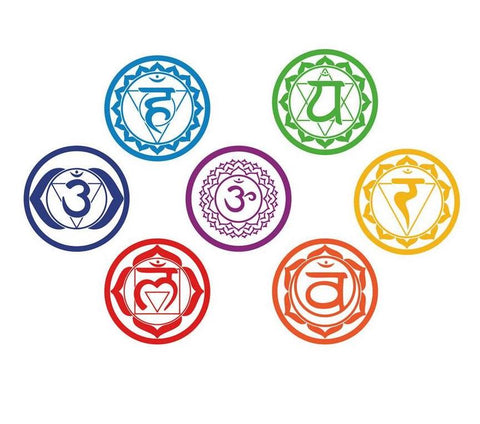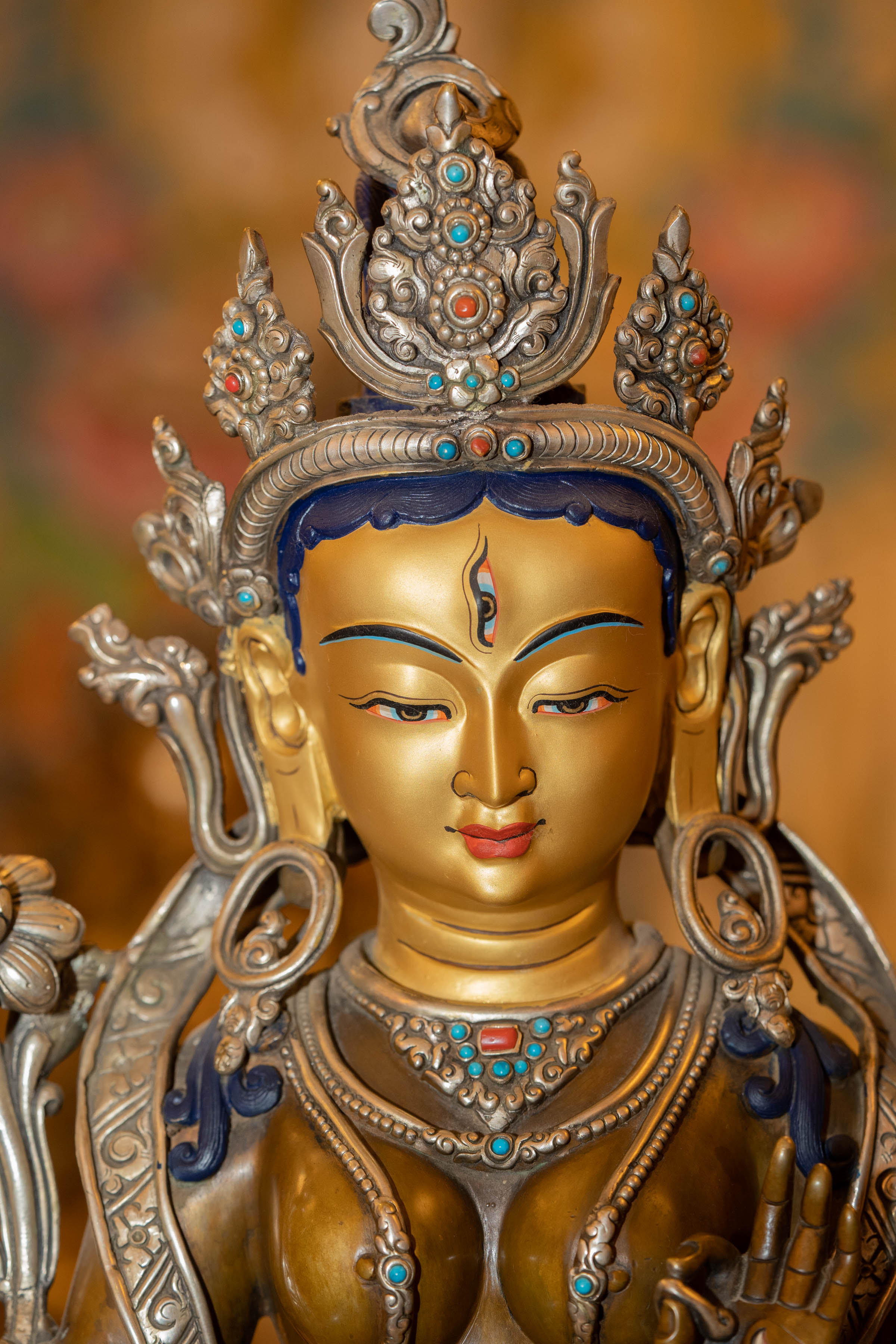Have you ever wondered what the Om symbol means? If you have an interest in spirituality, yoga, meditation or Eastern philosophies, it s likely you re already familiar with the concept of Om. A unique symbol with a deep spiritual meaning, let s take a closer look at what exactly the Om symbol represents.
Om , Ohm or Aum is a sacred sound that is known generally as the sound of the universe. Om is all encompassing, the essence of ultimate reality, and unifies everything in the universe. The vibrations that the Om sound creates are thought to energize the chakras throughout the body, especially the third eye and crown chakras, which help us connect with our Divine selves.
As Om is regarded as the original sound of consciousness and creation, by chanting its sound, we are physically tuning in to the universe, and creating a spiritual connection to the existence of all things.
When pronounced correctly, Om has four syllables and is pronounced AUM, beginning in the solar plexus and sending vibrations up into the chest. The second syllable U moves the sound up into the throat as the sound moves forward along the upper palate. The third syllable M is a prolonged syllable and brings the vibration through the upper chakras as the teeth come together to touch gently. The final syllable is the deep silence of the Infinite as the overall vibration rises through the body and into the Universe.
There are many reasons why we chant Om at the beginning and ending of a yoga class: Om allows us to separate the time of our practice from the rest of our everyday lives, signifying that our practice time is a sacred time in which we care for ourselves while also practicing mindfulness. There are several other reasons why we Om, such as:
- When chanted Om vibrates at the frequency of 432 Hz the same vibrational frequency found in all things throughout nature.
- Om is the basic sound of the universe; chanting it symbolically and physically tunes us into that sound and acknowledges our connection to everything in the world and the Universe.
- The rhythmic pronunciation and vibrations have a calming effect on the body and the nervous system similar to the effects of meditation. This lowers the blood pressure and increases the health of the heart.
Ultimately, Om connects us to our practice in a deeper way, creating a spiritual bond to our practice that is more than just the physical asanas.

The Cultural and Historical Roots of OM
The first mention of Om was in the Upanishads, more specifically the Mandukya Upishad, which is a sacred Hindu text that focuses on the different theories of the Ohm meaning. In this text, it says that Om is imperishable and that it is all states of time, past, present, future, as well as transcending time itself.
These texts are associated with Vedanta, one of the six Hindu philosophies, and the etymological aspects of the Ohm meaning are thoroughly discussed in the oldest Vedantic texts. They regard the meaning of the Om symbol as inexhaustible, infinite language and knowledge, and the essence everything that exists and of life itself.
The syllable OM is an ancient Sanskrit letter first found in the Vedas, originating between 1500 1200 BC. A collection of Vedic Sanskrit hymns, they were sung in praise of the Divine. They were not written out at first, but were vibrated into existence using human speech. Teachings on the metaphysics of OM were later elaborated on in the Upanishads, ancient Indian mystical texts. Later, the Yoga Sutras of Patanjali categorized the 8 Limbs of Yoga. The sixth of these, Dharana, meaning concentration, described various methods of supporting the mind to achieve single-focused attention. Repeating a mantra, and especially this syllable OM, was an important aspect of accomplishing this sixth stage of yoga, or union with the Divine origins. Anne Dyer, sound yoga expert, in an interview with Rodney Yee, explains that Patanjali taught this: Chant Om and you will attain your goal. If nothing else works, just chant Om.
THE USE OF OM TODAY
Both the Om symbol and the Om chant are frequently used around the world today. The meaning of the Om symbol is very powerful and can hold significance because many people can relate to it. The symbol is one of peace, tranquillity and unity and reminds people to slow down and breathe. Thus, the symbol is very popular as a form of jewellery.

Yoga & Meditation - The chant is also widely repeated in Yoga and meditation practices. It is used because the sound, and the vibrations it makes, helps to calm the mind and the central nervous system. Stress can easily build up in our busy day to day lives, so sparing some time to chant and ease the mind can be very helpful and beneficial to our health. The Ohm meaning also signifies unity so when the sound is chanted in a class, it brings the group together.
Chanting is believed to help align the body, mind and the soul, which is why people feel more connected with themselves after meditating and practicing the chant. Between chants, there is a space of silence, which represents the fourth state of being: the absolute state or Turiya.
There are many benefits to chanting Om every day. These include reducing stress levels, improving concentration, regulating your sleep cycle, letting go of negativity and feeling more energised and invigorated.
Similarly the Mantra 'Om' in thangka is widely used specially in the Mandala Thangka Painting. This has the similar meaning what we discussed above. Hence, thangka can be used as a tool for meditation through visualisation. Concentrating on the word OM and using the sound to practice it. Browse our OM Mandala Collection Thangka which can be used for Meditation and it also adds a beautiful decoration space to you Living Room, Office or your meditation altar space.
AUM Creator, Preserver, Destroyer
OM is also sometimes written and pronounced AUM, a prolonging of the individual sounds contained in OM. Each of the three letters, and sounds, corresponds to a different aspect of the divine. The first sound, A, invokes Brahma, the creative aspect. The U sound invokes Vishnu, the preserver. And the M sound, Shiva, represents the destructive aspect of God. So the three sounds in this one syllable remind us of these three aspects of the Divine, without which nothing exists, everything is sustained, and all things dissolve back into the void. After one chants AUM and has taken this journey through the transformation of the cosmos, it is traditional to pause, and sit in silence, and experience that creative void, vibrating with that primordial vibration.



